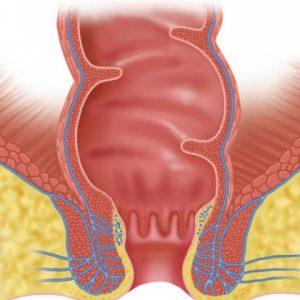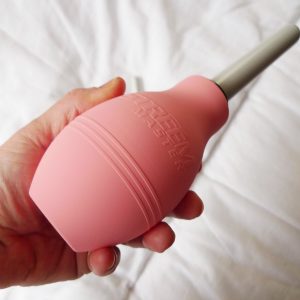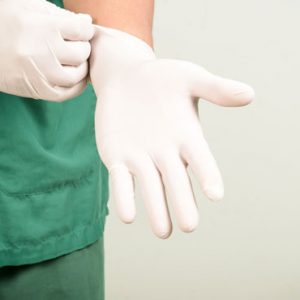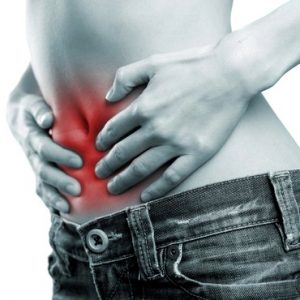Proctalgia referred pain in the rectum in the absence of organic lesions of its tissues. Pathology may arise as a result of neurological diseases or mental and emotional experiences.
Quite often, the syndrome proctalgia occurs in perfectly healthy people who have not previously observed problems on the part of the intestine. This causes the patients to troubling questions, excessive alertness (including cancer) and for more extreme emotional experiences.
Patients with proctalgia do proctologists, but also should involve the assistance of a neurologist and therapist.
General data
Proctalgia believe the pain in the rectum, the cause of which has not been established with the involvement of all possible modern methods of diagnosis.
Syndrome proctalgia occurs less often than pain in the rectum due to a particular disease. It often happens that the morphological substrate of such pain in the wall of the rectum to find possible, if not, stating proctalgia.
Proctalgia most often detected in middle age group from 35 to 45 years, men are affected more often than women. In children and adolescents manifestations of proctalgia can occur on the background of a brief violation of the act of defecation – diarrhea, associated with emotions, in particular arising from a sense of responsibility (for example, in connection with the upcoming exams, an important speech at the scene, participation in sports competitions and so on).
To state proctalgia should be only with the full confidence that the morphological and pathophysiological background of pain in the rectum do not exist. Often under the guise of proctalgia can mask the disease in the early stages of development, when they cannot be diagnosed using diagnostic equipment or laboratory tests.
Reasons
The immediate cause of pain that occurs when proctalgia, is a spasmodic contraction of the fibres of the muscle membrane of the rectum, in which there is excessive irritation of the nerve endings is formed pain.
Often, these muscle spasms can:
- have a neurological nature.
- occur due to severe physical stress;
- be the result of emotional experiences.
Proctalgia neurological most often occurs in the background:
- diseases of the lower gastrointestinal tract;
- pathology of the pelvic organs.

Diseases of the digestive tract, which may develop neurological proctalgia is:
- the mezadenita – inflammatory process in the lymph nodes of the mesentery (a thin connective tissue film, which attaches the intestines to the inner surface of the abdominal wall, and where are the lymph nodes, the vessels feeding the bowel, as well as the nerve branches responsible for its neurological support);
- acute and chronic sigmoid inflammatory lesion of the mucous membrane of the sigmoid colon;
- acute and chronic proktoshigmoidit – associated inflammation of the mucosa of the sigmoid and the initial division of the rectum;
- acute and chronic paraproctitis – inflammation of the tissues around the rectum;
- caudal teratoma – a tumor in the rectal tissue, which originated during the fetal formation of the fruit that contains rudiments of embryonic tissues;
- Crohn’s disease – specific education tubercles of granulocytes in the intestine;
- ulcerative colitis – an inflammatory lesion of the mucosa of the large intestine with the formation of ulcerations.
Pathology of the pelvic organs in which may develop proctalgia neurological in nature, it is often:
Proctalgia due to severe physical stress can occur when:
- even short-term lifting and carrying heavy objects;
- physical work for long time without rest.

In fact, any person able to give the emotional impact, are not immune from proctalgia, as it may occur on the background of the circumstances of a stressful nature. They can be:
- the death of a loved one;
- tense situation at work;
- professional liability connected with risks of their own (the miners, test pilots, engineers) and other people (managers, transportation hubs, rescuers, doctors and so on);
- conflict situations in the family;
- failures associated with personal life (divorce, betrayal of a loved one, years of futile attempts to arrange a personal life and so on);
- social disruption due to a material factor (the lack of means of subsistence, robbery, debt, outstanding credit);
- emotional stress associated with the problems of loved ones (stress at work, illness, large financial loss);
- serious conflicts and problems in society (threats, blackmail, administrative and criminal responsibility)
and many others.
Proctalgia often preceded by emotional experiences with negative connotation. But it is possible the impact of strong positive emotions, for which one develops excessive stimulation of brain centers, why failure occurs in the innervation (nerve supply) of the rectum. This:
- victory in high-level competitions;
- admission to a prestigious school;
- a significant promotion at work;
- major material acquisition;
- the upcoming wedding.
and many others.
To establish that proctalgia developed against the backdrop of excessive positive emotions can only be experienced doctor to carefully find out the history (story) pathology – in a state of joyous euphoria patients not able to give it a value and may not mention it because of the stereotype that only negative stress is able to erode health.
Also proctalgia may occur due to:
- constant irritation to the rectal wall from the inside;
- banal pressure from the neighboring organs and tissues.
The regular irritation of the rectal wall inside with the subsequent development of pain syndrome may experience:
- after performing certain medical procedures;
- due to the specific sexual preference.
Manipulation, which irritated the wall of the rectum with the possible appearance of proctalgia can be:
- diagnostic;
- treatment.
Such diagnostic procedures include:
- finger examination of the rectum (most often in men for diagnosis of diseases of the prostate gland);
- rectoscopy – examination of rectum using a rectal (rectal) mirror;
- sigmoidoscopy – examination of rectum and the ultimate divisions of the sigmoid colon with sigmoidoscopy (a variety of endoscope – medical device with integrated optical system and lighting)
- colonoscopy – inspection of all departments of the colon using the colonoscope (endoscope of the variety);
- barium enema x – ray examination of the colon with a preliminary introduction to him through the rectum contrast medium.
Therapeutic manipulation involving the rectum, which can lead to proctalgia is:
- statement of purification or treatment mikroklizm;
- staging of rectal suppositories (rectal candles), made in the home, so their sizes may not match the size of the lumen of the rectum;
- massage the prostate of men through the rectum.
On the basis of specific sexual preferences irritation of the rectal wall with the development of proctalgia can develop:
- homosexuals in the discrepancy between the size of the rectum of one sexual partner and penis – the other;
- because of the gross effects on the rectum of devices for satisfaction and self-satisfaction (so-called sex toys) – especially random, inappropriate things.
Pressure on the rectum from neighboring organs and tissues with the subsequent emergence of pain syndrome may occur in pathologies such as:
- any tumor of the uterus in women, able to achieve large size fibroids (muscular elements), fibroma (connective tissue), fibroids, and others;
- adhesive disease of the pelvis – the development of a large number of connective tissue bands that have formed as a result of any transferred disease (often inflammatory or inflammatory) or after surgery on the pelvic organs;
- foreign body – e.g., a fragment of shell, which fell in soft tissue during the fighting, was encapsulated and was a long time in the rectal area, causing purulent-inflammatory process, but crushing to the wall of the rectum
and so on.
For pathology
The specific reason for proctalgia is often neurogenic (in the background of the nerve branches) spasm:
- muscle-elevatorov of the rectum (levator rectum);
- pubic-coccygeal muscles. This muscle stretches from the pubic bone to the coccyx, supports the anus and the surrounding the internal organs (bladder and kidneys).
Proctalgia is of two types:
- quickly turning, or transient – and the pain appears on the background of complete well-being on the part of the rectum, suddenly and as suddenly disappear, without medical assistance. Such a pattern of proctalgia also called volatile;
- prolonged – lasts for at least several hours, not amenable to relief by using painkillers.
The duration of the pain syndrome depends on the processes excessive irritation in the muscles of the rectum.
Also proctalgia may occur as manifestations of Ecopsychology pain syndrome – a pathological condition characterized by paroxysmal or permanent (persistent) pain in the coccyx, anus and rectum in the absence of organic lesions.
Symptoms of proctalgia
Clinic of proctalgia depends on its type.

Characteristics of pain associated with quickly passing proctalgia the following:
- localization – portion of the rectum or in its entirety;
- widespread in some patients pain is limited local in nature, in others, they can radiate to the coccyx, anus, perineum, hip joints, rarely in the inner thighs (or thigh);
- feature – a sharp stabbing pain or cramping nature, which are subjectively felt sick as convulsive spasm (in some way may resemble cramps severe diarrhea when the colon is emptied completely, but the urge to emptying it remain);
- the intensity is strong;
- the appearance – appear suddenly, last from one to several minutes, are not associated with the act of defecation. Often the pain attacks occur quite often, which, despite its brevity, significantly worsen the quality of life of the patient.
In some cases, proctalgia may be accompanied by discomfort in the crotch area. With their regular occurrence, these patients are more strengthened in the opinion that they had any disease of the urogenital area.
Characteristics of pain in a long proctalgia:
- localization – portion of the rectum with a slow coverage of the colon in its entirety;
- distribution radiating to neighboring structures, the coccyx, anus, perineum, hips, inner thighs;
- feature – constant aching pain, which may manifest periodic sudden “aggravation” in the form of spastic spasms;
- intensity – medium intensity with periodic amplification of the subjective pain;
- the appearance – appear suddenly, last from an hour to several hours, as suddenly disappear.
Pain and transient, and in long proctalgia can occur several times a day – including at night, due to which the patient has disturbed sleep.
Even if the pain is tolerable, the presence of proctalgia depressing effect on the psychological state of the patient, because of this, he observed:
- irritability;
- depression;
- the feeling of fatigue;
- a feeling of nervousness due to expectations that proctalgia may appear at the most inopportune moment of my life during business meetings, important meetings and so on.
Proctalgia runs for a long time, in waves – periods of calm alternate with exacerbations. Over time, the frequency of these exacerbations increases.
Pathology can gain debilitating for which hypochondriac patients appears kantserofobiey – fear the development of cancer.
Diagnosis
On the basis of mere complaints of the patient, to diagnose proctalgia impossible – one way or another, you should conduct a series of surveys that will exclude organic lesion of the rectum.
Important is clarifying the history (of) pathology. Very often it revealed that patients with proctalgia endured:
- diseases of the urinary system;
- violations of the genital organs;
- proctologic pathology.
Sometimes Vice versa – is preceded by a voiced proctalgia diseases, patients who have such diseases are developed, indicate that the previously observed pain in the rectum.
Proctalgia is one of the pathological conditions under which further research should be conducted as widely as enable the diagnostic capabilities of the clinic. This is a physical, instrumental, laboratory methods.
Data of physical examination are as follows:
- during the inspection of the anus – in some cases, the external sphincter will be spacerowa;
- rectal examination (digital examination of the rectum) pain is absent, there may be spasm of elevatorov.
Instrumental methods involved in diagnosis in this pathology, the following:
- sphincteroscope – measurement of the rectal tone of the sphincter;
- rectoscopy – examination of the internal surfaces of the walls of the rectum with a rectal mirror;
- sigmoidoscopy – examination of rectum and end divisions of the sigmoid colon with sigmoidoscopy;
- colonoscopy inspection of the colon in its entirety with the help of a colonoscope;
- barium enema – x-ray examination of the large intestine, where it is administered a contrast agent, and then make a series of x-ray pictures;
- ultrasound examination of the pelvic organs (ultrasound) – it can be used to determine the presence of pathological process in a particular organ, its localization, size, characteristics of fabric;
- diagnostic laparoscopy – during this survey through a small incision in the abdominal wall introduce a laparoscope (a type of endoscope) to inspect the organs of the abdomen and pelvis.
To exclude urologic diseases shown to consult a urologist, gynecologic diseases in women – consult a gynecologist.

Of laboratory methods in the diagnosis of proctalgia used:
- General blood analysis – is conducted to detect the inflammatory process (shows elevated white blood cell count and erythrocyte sedimentation rate) or signs of bleeding (reduced number of red blood cells and hemoglobin), which is characteristic of a number of gynecological diseases, malignant tumors, ulcerative colitis and others;
- urinalysis – it is performed to rule out pathology of urinary system;
- coprogram – fecal make a conclusion about the presence or absence of pathological process in the colon;
- bacteriological examination – do stool cultures on nutrient media, colonies grown ascertain the presence (or absence) of pathogenic microflora and its variety.
If when conducting all of these methods of study of organic and functional disorders are not detected, and pain in the rectum continues, diagnose the primary proctalgia.
Differential diagnosis of
If organic pathology was excluded, differential (distinctive) diagnosis of proctalgia carried out with such pathologies as:
- piriformis syndrome – pain in the buttocks with the spread of pain to the groin, upper thigh and calf. This pathology is the most common tunnel neuropathy (lesions of the peripheral nerves due to compression in the anatomical narrowing);
- coccygodynia – pain in coccyx, mainly because of injury (the trauma can be long before the onset of pain, often for 6 months before the appearance of pain syndrome).
Treatment of proctalgia
Treatment of proctalgia – conservative. To ease the pain attacks are followed by such assignments as:
- avoidance of stressful situations, normalization of the emotional background;
- sedatives;
- hypnotics;
- diet to help normalize digestion – receive easy-to-digest food with a sufficient amount of fiber;
- physiotherapy;
- procaine blockade, the introduction of novocaine in the soft tissue;
- microclysters;
- massage;
- psychotherapeutic techniques of relaxation.

Of physiotherapeutic methods effective are:
- UHF;
- infrared irradiation of the semiconductor laser;
- diathermy;
- mud;
- electrical stimulation.
Are these types of novocaine blockade as:
- perestrelka (ecologista);
- retrorektalny (posedevshaya).
Microclysters is the introduction of small amounts of medicines into the rectum. For mikroklizm with proctalgia used:
- novocaine;
- sea buckthorn oil;
- collargol.
Massages:
- coccygeal muscle;
- elevatorov the anus when severe spasm.
Often requires consultation of a qualified psychologist.
Prevention
The main prevention of proctalgia are:
- normalization of the emotional background, avoiding stressful situations, when necessary, changing jobs, place of residence, the assistance of a therapist to prevent the development of psychosomatic pathologies – including proctalgia;
- treatment of opportunistic diseases, against which can be pain in the rectum;
- a healthy way of life.
Forecast
The prognosis of proctalgia different. In some patients the therapy resulted in a significant decrease and disappearance of pain, others are amenable to treatment only after repeated courses, the third lends itself with great difficulty.
In some cases of persistent pain attacks degrade the quality of life of the patient, this background decreases their performance.




With thanks! Valuable information!
I’m unsure about the bullet points.. maybe kinda overdone.